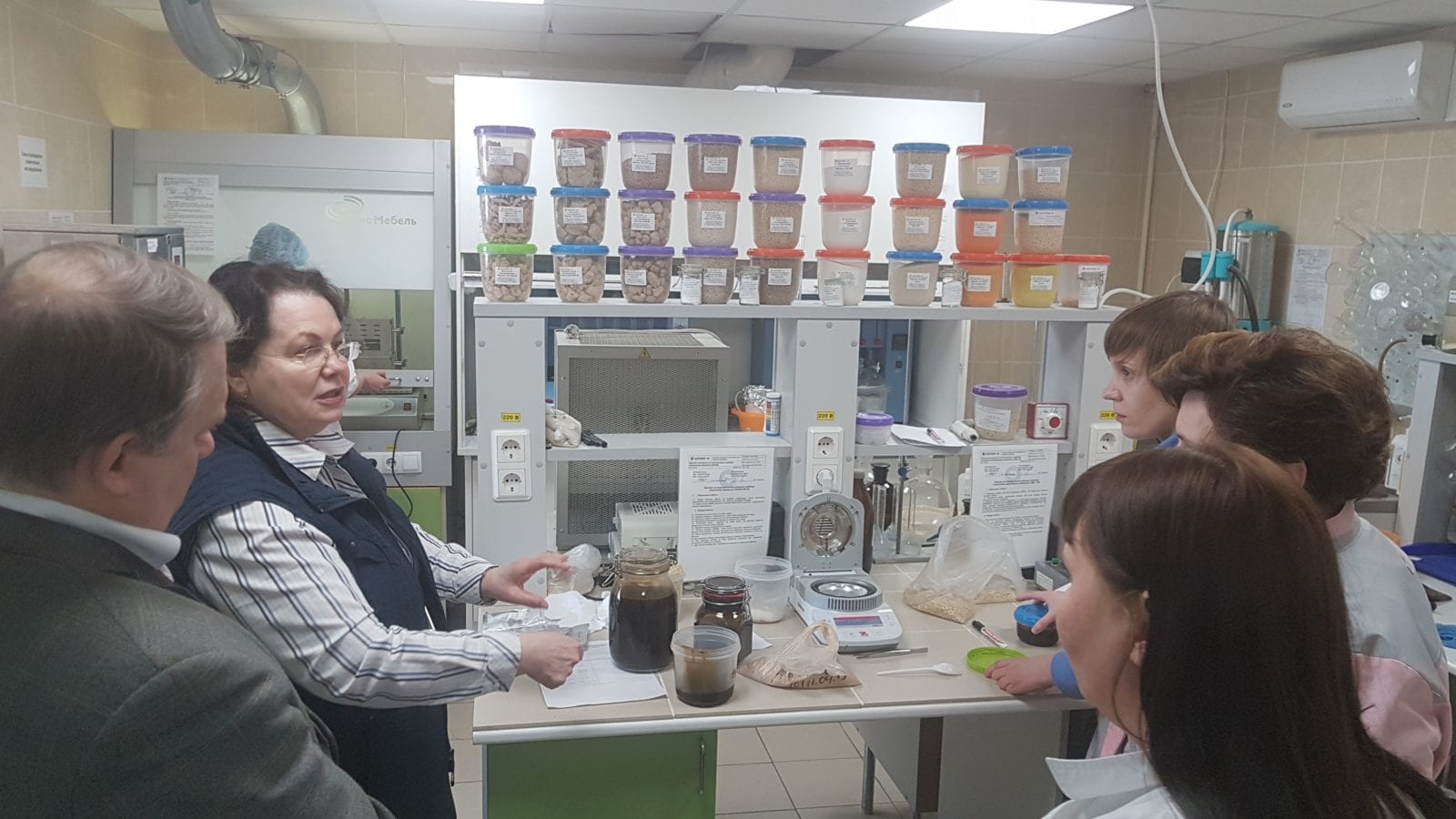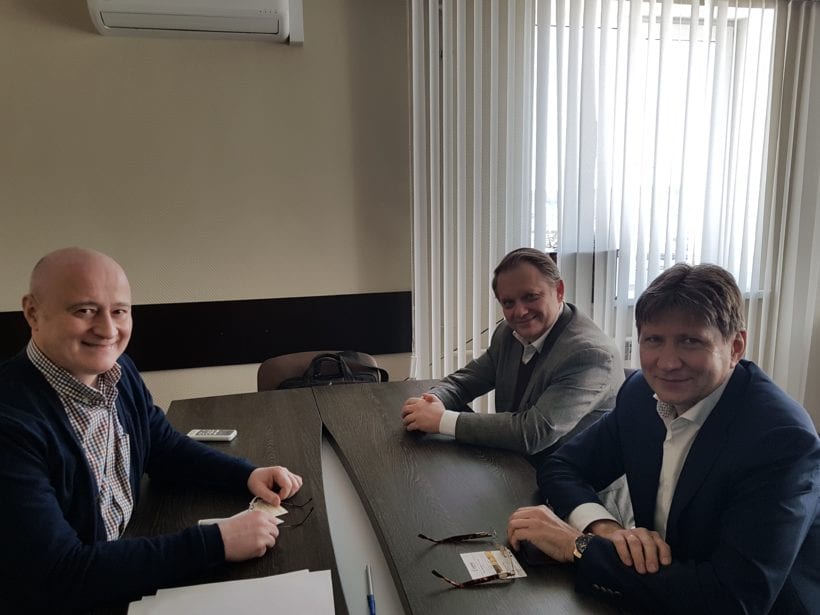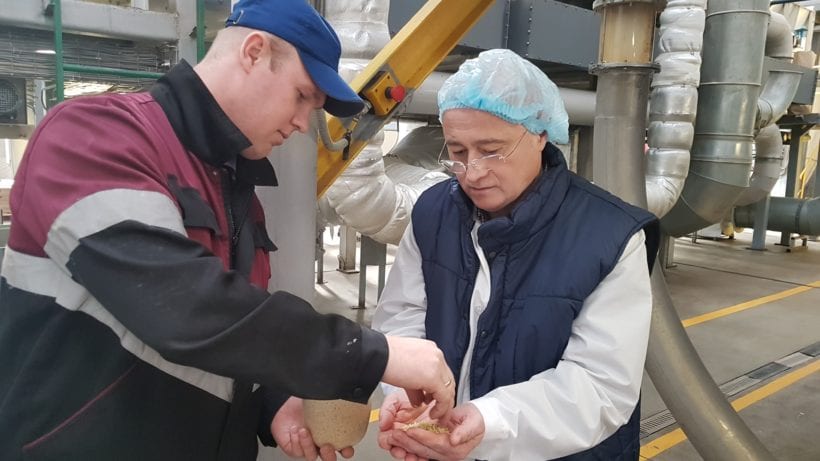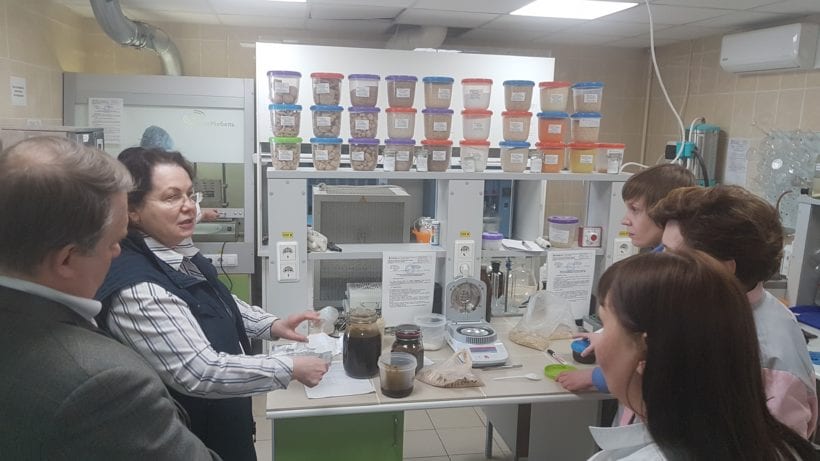Leading Russian Soy Processor Reaches out to U.S. Soy
- Category:
- General News
- Soy Foods

At the invitation of the customer and in an effort to re-engage relationships left dormant over the past few years, USSEC attended a roundtable discussion at the CJSC Partner-M, Russia’s leading added value soy ingredients manufacturer and the most innovative in the field of meat analogues.
USSEC consultants Dr. Maria Domoroshchenkova and Dr. Iani Chihaia visited the company’s soy processing facilities, located in Kaluzhskaya Oblast near Moscow, for a round table discussion and production plant visit mid-April. Partner-M is an enterprise whose main activity is concentrated on a deep processing of plant-based raw materials, producing a wide assortment of products such as textured vegetable proteins, high-protein and high-starch containing flours, dietary fibers, animal and milk proteins, and supplementary ingredients. By 2018, the company’s total production capacity reached 70,000 tons of food ingredients per year. USSEC consultants were invited to tour the commercial production facilities of texturized soy proteins, meat analogues and the pilot plant for soy protein concentrate (SPC).

“The success of Partner-M Company is the result of a long-term investment in knowledge, people and high-end processing equipment. Established from scratch, the company had a clear goal to be a leader in soy food ingredients processing in Russia,” says Dr. Vasily Ponomarev, the General Director and main shareholder of the company. One of the crucial moments in the history of my business was a visit to the ‘Texturized Vegetable Protein & Other Soy Products’ at the invitation of the American Soybean Association, held at Texas A&M University, followed by a number of further visits to similar courses, which allowed to expand and to deepen the practical knowledge on soy processing and application. Thanks to the inspiring talks and very well designed practical sessions, such trainings were very valuable for us since we were able to enhance our understanding on soy texturization.”
Additionally, Dr. Ponomarev shared his positive experience of the usage of U.S. soy flour and white flakes from Cenex Harvest States Company for the production of texturized vegetable protein (TVP) in the past years with the USSEC consultants.



The excellent achievements in soy texturization made Partner-M consider the idea to get involved in added value soy protein products for animal feeding. They recently patented and started a pilot production of soy protein concentrate using a proprietary technology.

With soy protein concentrate in the products portfolio, Partner-M is targeting the high value feed protein ingredients market segments: aquaculture and young animals.
“The soy processing for animal feeding involves different steps and treatments, which influences the nutritional or functional properties of the final products. Then, the proper application of different products in animal feeding is very important. All of these things are influenced by quality of the soy, the conditioning of the beans, and processing methods,“ emphasized Dr. Domoroshchenkova during the roundtable meeting with Partner-M managers. “Special attention has to be paid to the quality of soybeans and soybean flakes as a raw material for production of SPC with a high nutritional profile.”
Dr. Chihaia informed Russian customers about the main quality parameters of soy protein products, which should be evaluated for feeding applications such as digestible amino acids, energy, and residual level of antinutritional factors.
One of the important features of Partner-M production is focusing on green technologies that ensure compliance with the principles of a conscious attitude to nature, the environment, and consumers. The company is actively investigating new areas of usage their soy protein products for food and feed applications including the organic products market.
Because vegan food is predicted to grow in Russia over the coming years, soyfood production is expected to grow. The potential of the expansion of Partner M company for Russian and west European soyfood and aquafeed ingredients is imminent, which makes them a long term prospect for U.S. soybeans and derivatives, such as white flakes and high pro meal.